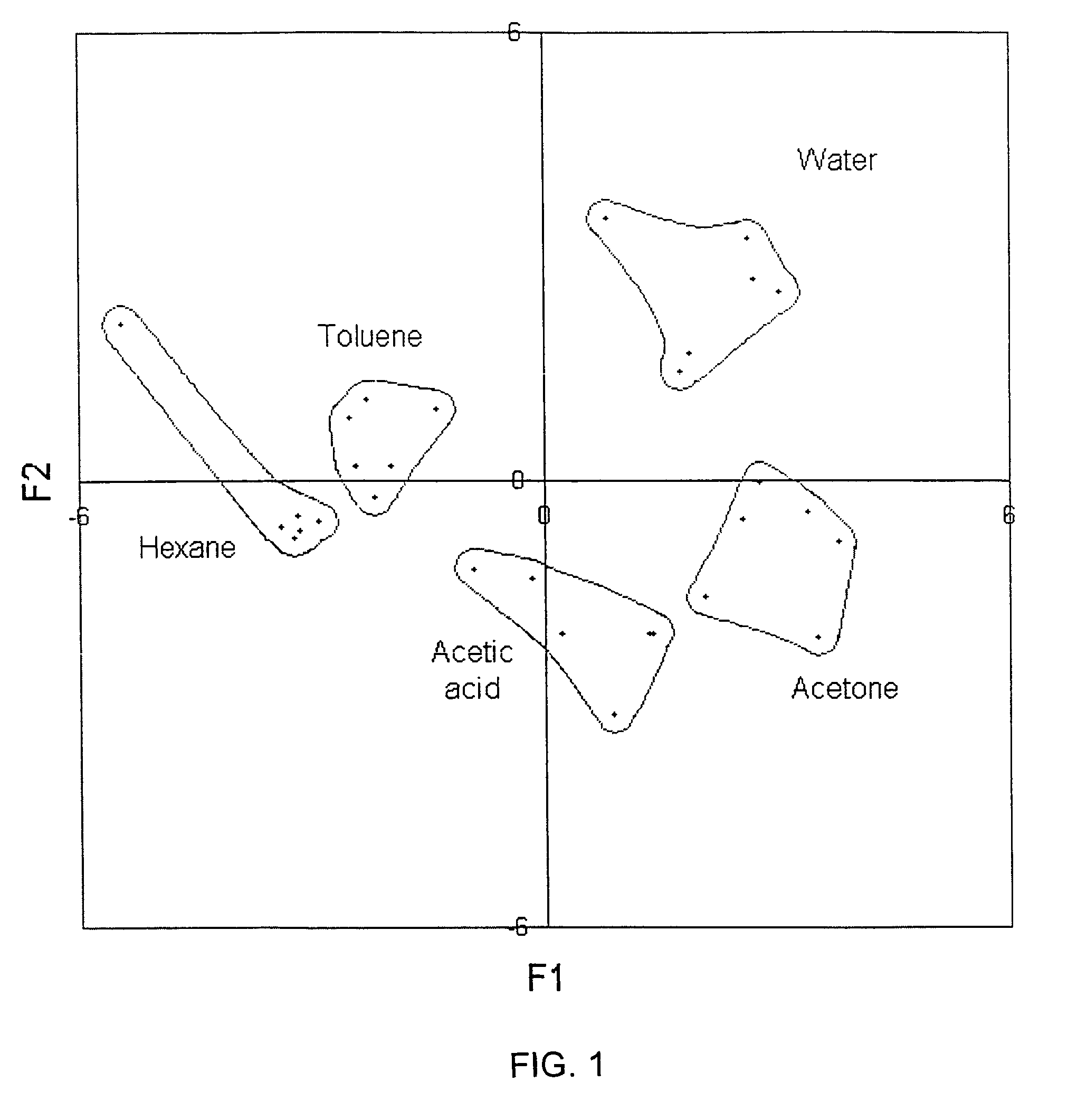Sensor instrument system including method for detecting analytes in fluids
a technology of sensor instruments and fluids, applied in the field of sensor instruments, can solve the problems of poor reproducibility in sensor manufacturing, slow response, and still primary disadvantages inherited from the sensing mechanisms of such multiples, and achieve the effects of improving analyte detection and identification, improving the control of adsorption and desorption processes, and low cost of manufactur
- Summary
- Abstract
- Description
- Claims
- Application Information
AI Technical Summary
Benefits of technology
Problems solved by technology
Method used
Image
Examples
examples
[0164]The following are examples and experimental information of the present invention, regarding the single sensor operated by the electrical frequency sweeping technique as the core technique of the present invention, which are offered by way of illustration only and not by way of limitation and restriction.
[0165]A pair of electrodes were constructed with gold wires. The electrodes were 12 mm in length and had a gap approximately 1 mm. The electrodes through standard coaxial electrical cables were connected to an AC analyzing device, such as an “Agilent 4294A” impedance analyzer (Agilent, Palo Alto, Calif. USA). Calibration of electrodes was proceeded prior to sample measurement. A frequency sweeping method was used in impedance measurement, where resistance and reactance or impedance and phase angle were simultaneously obtained at each of various swept frequencies. The first experiment was conducted applying frequencies swept from 10 KHz to 500 KHz, and the second experiment used...
PUM
| Property | Measurement | Unit |
|---|---|---|
| frequencies | aaaaa | aaaaa |
| length | aaaaa | aaaaa |
| length | aaaaa | aaaaa |
Abstract
Description
Claims
Application Information
 Login to View More
Login to View More - R&D
- Intellectual Property
- Life Sciences
- Materials
- Tech Scout
- Unparalleled Data Quality
- Higher Quality Content
- 60% Fewer Hallucinations
Browse by: Latest US Patents, China's latest patents, Technical Efficacy Thesaurus, Application Domain, Technology Topic, Popular Technical Reports.
© 2025 PatSnap. All rights reserved.Legal|Privacy policy|Modern Slavery Act Transparency Statement|Sitemap|About US| Contact US: help@patsnap.com



